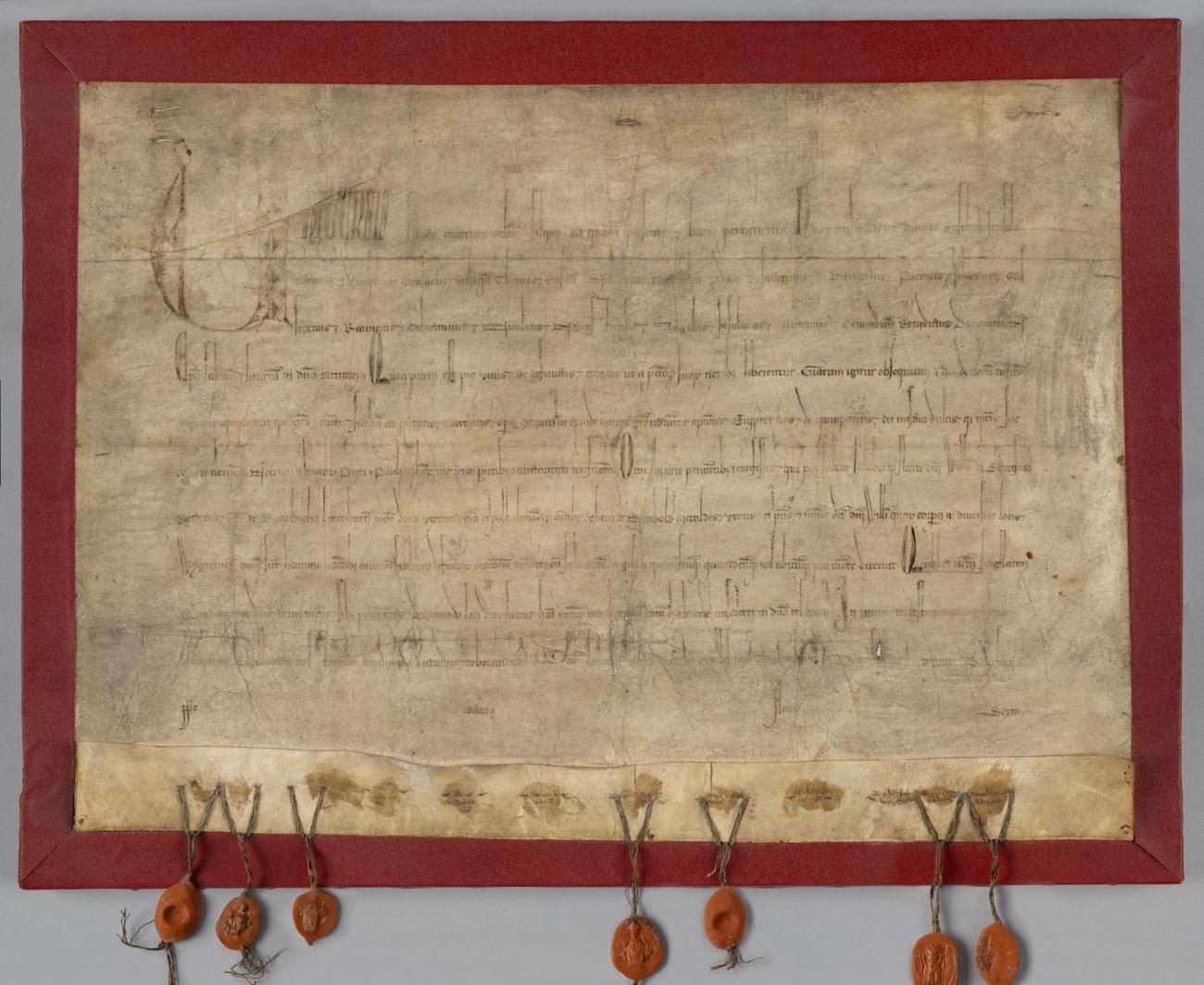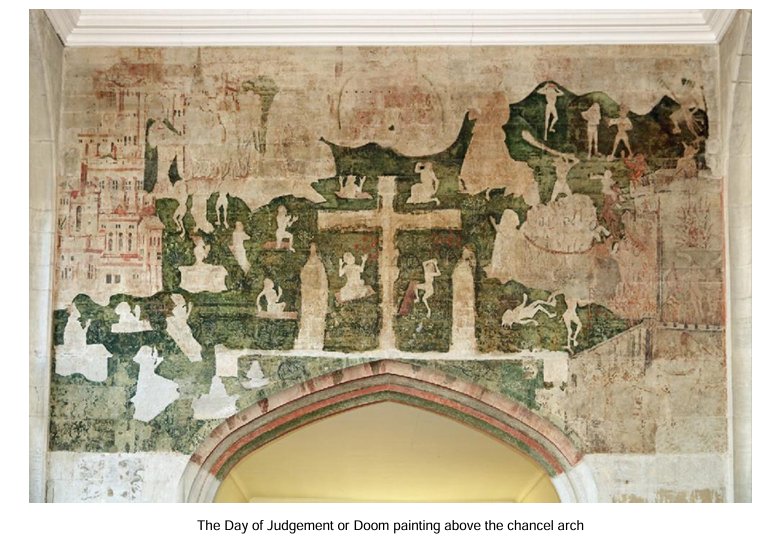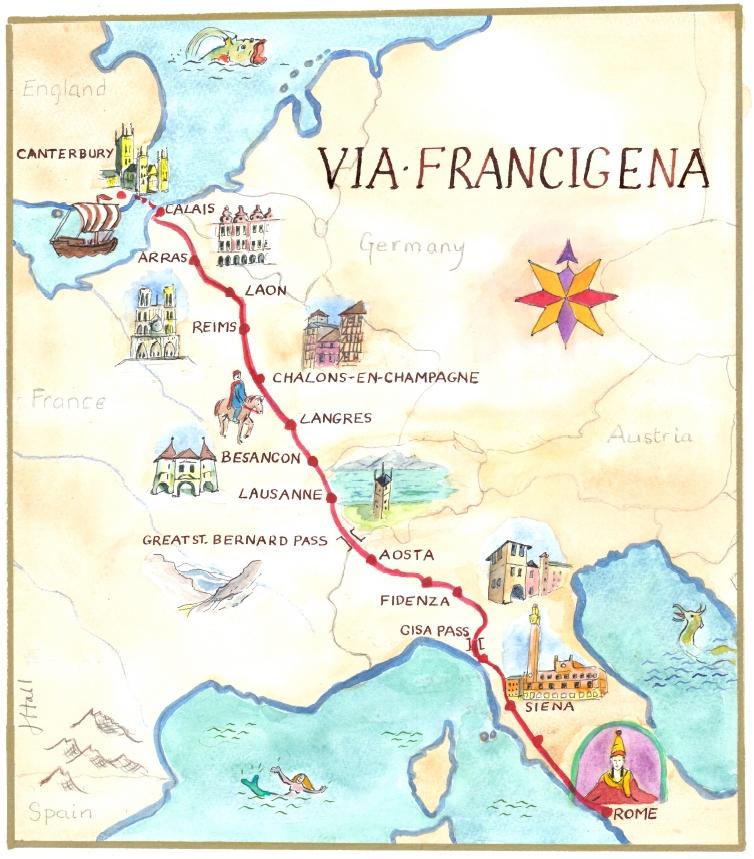What was a Letter of Indulgence?
Letter of Indulgence: written in Latin, it is dated at the Lateran in Rome in 1300 CE. Image is courtesy of Stratford Town Council (Original record cared for by Shakespeare Birthplace Trust)
The Letter of Indulgence is a historic document once belonging to Stratford’s Guild of the Holy Cross. Twelve bishops were signatories to the manuscript, which still has 7 of the 12 bishops’ red wax seals attached to it, and these seals would have given the document legal validity. The document reveals that an indulgence of forty days was granted by the twelve bishops to all who will pray for the safety and healthy estate, during life, of Sir William de Stratford and his parents, and for the souls of all faithful deceased.
The De Stratfords were a powerful and influential local family, and Sir William, a clergyman, was likely a descendent of the Robert de Stratford who founded the Guild of the Holy Cross in Stratford, and who was appointed first Master of the Guild in 1269. Two De Stratfords can be seen in the 20th century stained-glass windows in the Chapel.
‘Indulgences’ were a key doctrine of the medieval Church, and could be granted for anything from good works and charitable acts, to prayers and pilgrimage. It was believed indulgences could reduce your time in Purgatory, a place between heaven and hell where souls were purged of their sins. Essentially, indulgences were a way of getting time off for good behaviour!
Death and judgement were major concerns in the Middle Ages and we see these fears reflected in the Chapel’s 15th century wall paintings.
How would it have been displayed?
The Guild probably displayed the Letter of Indulgence in one of the Guild buildings, or next to the altar they once had in Holy Trinity parish church. This would have encouraged Guild members to pray for Sir William, his parents, and the souls of all faithful deceased. The primary purpose of the Guild was prayers for the souls of the dead, to help them get into heaven more quickly.
People wanted to avoid spending time in Purgatory at all costs, even if it meant a difficult and expensive trip to Rome. In the Middle Ages, Guild members risked wild animals, robbers and bad weather every time they travelled to Rome on pilgrimage or on Guild business.
The likely route they followed to collect the Letter of Indulgence was the Via Francigena which went through France and across the Alps. It would have taken around seven weeks on a horse or 70 days on foot, staying overnight at hospices, churches and monasteries. People still walk the 1000-mile route today.
(Map courtesy of Janet Hall)
How did indulgences lead to the whitewashing of the Chapel’s medieval wall paintings?
As time went on, the system of indulgences became more about making money. Instead of people earning indulgences through performing virtuous acts, the Church started to grant indulgences in exchange for payments to, for example, a charitable cause, or for the building of a church. These payments would come with a receipt, or letter of indulgence.
By the time the Chapel’s walls were painted in the late 1490s, the selling of indulgences was widespread. It was this that helped trigger the Reformation across Europe in the 16th century, when England went from being a Catholic country to a Protestant one.
Protestant reformers argued that salvation was by faith alone, and there was no need to do penance for the remission of sins, never mind pay for it. In time, the Catholic Church also banned the selling of indulgences.
As a result of the Reformation in England, religious guilds such as the Guild of the Holy Cross were dissolved (shut down), and following Queen Elizabeth’s 1559 injunction that all signs of superstition and idolatry be removed from places of worship, the Chapel’s medieval wall paintings were whitewashed.



